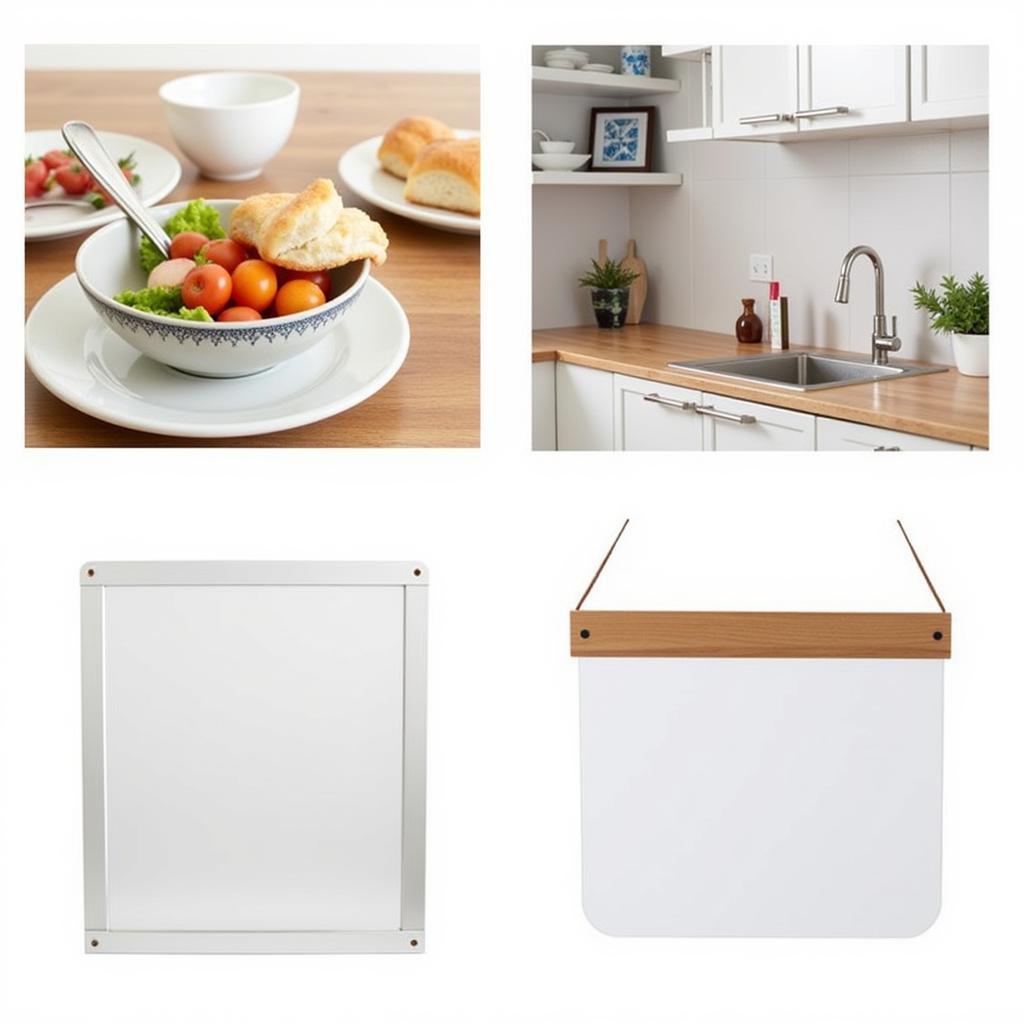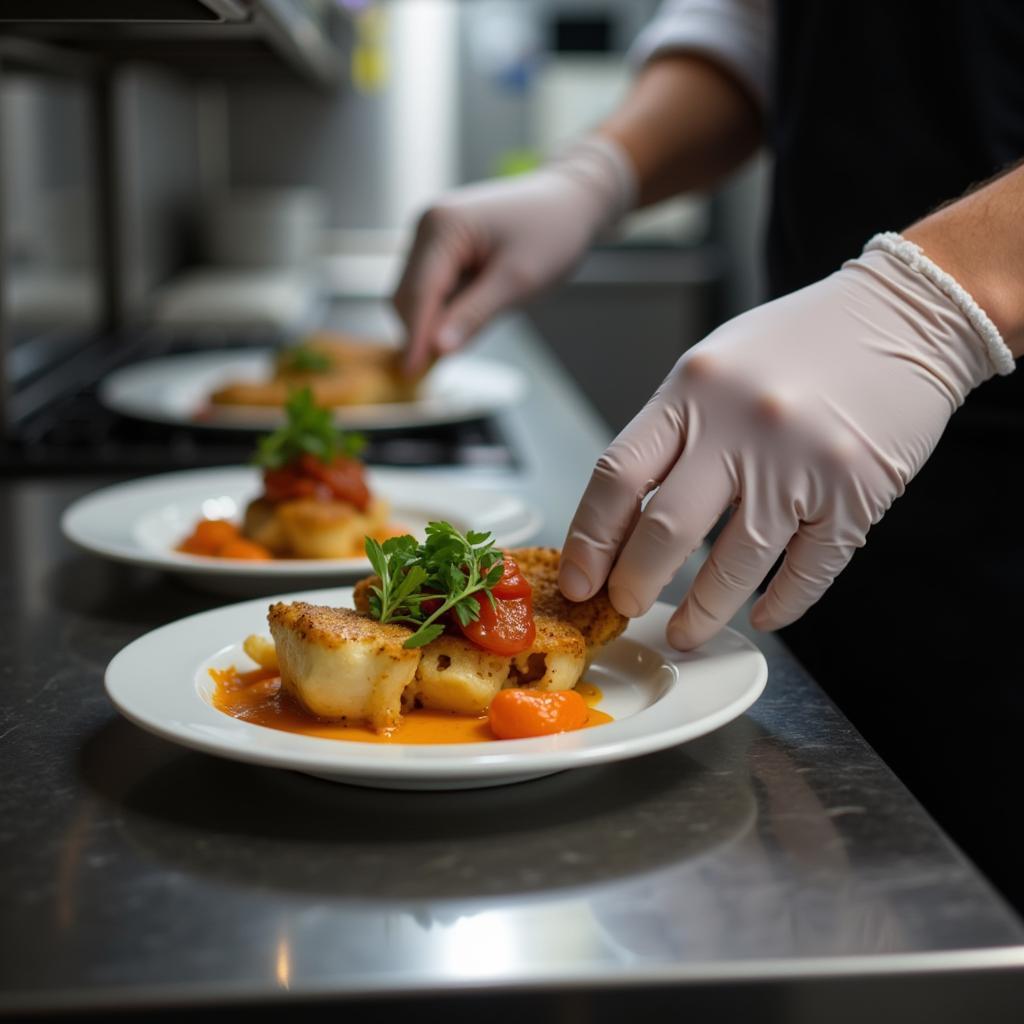Food Shields, also known as sneeze guards or food guards, are an essential part of any food service operation. They provide a physical barrier between customers and food, protecting against contaminants like saliva, dust, and germs. Whether you’re running a bustling buffet, a cozy cafe, or a food truck on the go, food shields are crucial for maintaining hygiene and ensuring customer safety.
Why Food Shields are Non-Negotiable for Food Businesses
Food safety is paramount in the food industry, and food shields play a vital role in achieving this. Here’s why they’re a must-have for any food service establishment:
- Preventing Contamination: Food shields act as the first line of defense against airborne particles that can contaminate food. They block coughs, sneezes, and even close-talking, preventing the spread of germs.
- Compliance with Regulations: Most health departments have strict regulations regarding food safety, and food shields are often a requirement. Using them demonstrates your commitment to upholding these standards and ensures a smooth inspection process.
- Enhancing Customer Confidence: In a world increasingly aware of hygiene, visible food safety measures like food shields can boost customer confidence. They provide peace of mind, knowing their food is protected from potential contamination.
- Preserving Food Quality: Beyond safety, food shields also help maintain the quality and freshness of your dishes. They act as a barrier against dust, insects, and other environmental factors that can affect taste and appearance.
Choosing the Right Food Shield for Your Needs
 Different styles of food shields available for various food service needs.
Different styles of food shields available for various food service needs.
Food shields come in a variety of shapes, sizes, and materials to suit different needs and environments. When selecting food shields, consider the following factors:
- Type of Food Service: The type of food you serve and how it’s displayed will dictate the style of food shield you need. For example, a buffet setup might require large, curved shields, while a cafe counter might benefit from smaller, countertop shields.
- Material and Durability: Food shields are typically made from acrylic, polycarbonate, or glass. Each material has pros and cons in terms of clarity, durability, and cost. Consider the demands of your environment when making your choice.
- Size and Dimensions: Ensure the shield’s dimensions are appropriate for your serving area and the height of your food displays. It should provide adequate coverage without obstructing access for customers or staff.
- Ease of Cleaning: Food shields need to be cleaned regularly to maintain hygiene. Choose a material and design that is easy to clean and sanitize, with smooth surfaces and minimal crevices.
Beyond the Basics: Maximizing Food Safety in Your Establishment
 Proper food handling and hygiene practices are essential for food safety.
Proper food handling and hygiene practices are essential for food safety.
While food shields are essential, they are just one element of a comprehensive food safety system. Implement these additional measures to ensure a safe and healthy environment for your customers:
- Proper Hand Hygiene: Emphasize the importance of frequent and thorough handwashing for all staff handling food. Provide handwashing stations with soap, water, and disposable towels.
- Safe Food Handling Practices: Train employees on proper food handling techniques, including temperature control, cross-contamination prevention, and appropriate storage procedures.
- Regular Cleaning and Sanitizing: Establish a rigorous cleaning schedule for all surfaces, equipment, and utensils that come into contact with food. Use food-safe sanitizers to eliminate bacteria and viruses.
- Employee Health and Hygiene: Encourage employees to stay home when sick and implement policies for reporting any symptoms that could compromise food safety.
Frequently Asked Questions about Food Shields
What is the best material for food shields?
Acrylic is a popular choice due to its affordability, clarity, and lightweight nature. Polycarbonate is more impact-resistant, making it suitable for high-traffic areas. Glass offers a premium look but is heavier and more prone to breakage.
How often should I clean my food shields?
Food shields should be cleaned and sanitized at least daily, and more frequently if they become visibly soiled or after handling raw meat or poultry.
Can I customize the size and shape of my food shields?
Yes, many manufacturers offer custom-sized and shaped food shields to fit specific requirements and display configurations.
Are food shields only necessary for self-service establishments?
While crucial for buffets and self-serve areas, food shields are beneficial in any food service setting where customers are in close proximity to food, such as cafes, deli counters, and even food trucks.
Do food shields impact the dining experience negatively?
When chosen and installed correctly, food shields should blend seamlessly into the environment without hindering the dining experience. Modern designs prioritize aesthetics and functionality.
Keeping Your Customers Safe and Satisfied
Investing in high-quality food shields is an investment in the health and safety of your customers and the reputation of your business. By creating a barrier against contamination and upholding the highest standards of hygiene, you can ensure a positive and enjoyable dining experience for everyone.
Remember, food shields are just one piece of the puzzle. When combined with comprehensive food safety practices and a commitment to cleanliness, you can build a brand that prioritizes both delicious food and customer well-being.
Need help choosing the right food shields for your business? Contact us at Phone Number: 02437655121, Email: [email protected]. Or visit us at 3PGH+8R9, ĐT70A, thôn Trung, Bắc Từ Liêm, Hà Nội, Việt Nam. We have a 24/7 customer service team.